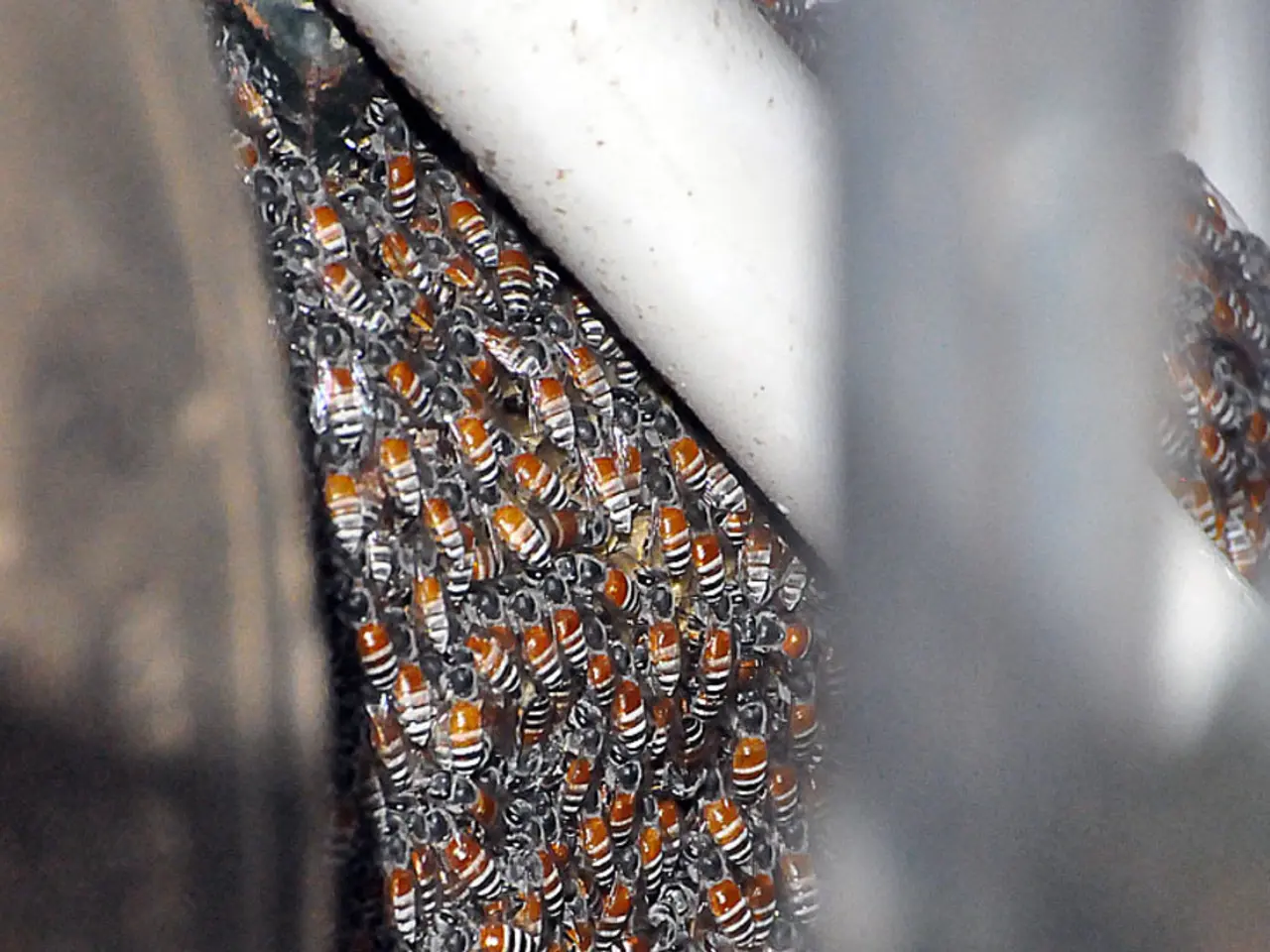Arthritis treatment through bee stings: An overview of scientific findings
In the realm of alternative medicine, bee venom therapy (BVT) has been used for over 3,000 years, with recent clinical research indicating promising but still developing evidence for its effectiveness and safety in managing arthritis, particularly rheumatoid arthritis (RA).
BVT involves injecting a person with honey bee venom or exposing them to bee stings from live bees. This treatment contains a variety of chemicals with potential medical applications, including various enzymes, peptides, and amines. One important medicinal property of bee venom is its anti-inflammatory properties, which may contribute to its potential benefits in managing joint pain and inflammation associated with inflammatory forms of arthritis.
A 2020 meta-analysis analysed the results of several randomised controlled trials investigating BVT for a range of diseases, including arthritis, and concluded that BVT might be beneficial in treating inflammatory forms of arthritis. A randomised controlled trial from China using bee venom acupuncture over eight weeks (involving 5 to 15 bee stings every other day) showed that BVT was as effective as standard drug treatment with Methotrexate and Celecoxib in reducing symptoms of RA, with no significant differences in outcomes between the groups. This suggests that BVT can be a safe and effective alternative worthy of wider clinical use.
Another clinical trial comparing BVT to a saline placebo in RA patients reported significant improvements in pain, swelling, stiffness, and quality of life for the bee venom group. However, this trial was described as low-quality and anecdotal evidence also supports pain relief and reduced swelling effects.
Safety assessments from these and other studies show that adverse events (AEs) related to BVT are relatively low in frequency and mostly mild, such as localized redness or itching at the injection site, with quick recovery and no serious systemic reactions reported in the controlled settings. However, a known risk remains that bee venom can cause severe allergic reactions including anaphylaxis, which constrains the clinical use without proper precautions.
Anyone considering BVT should first undergo allergy testing to determine whether they are allergic to bee venom. Bee venom therapy should not be administered via direct stinging due to safety concerns.
The bee venom extract market and clinical interest continue to expand, especially focused on melittin (its main bioactive peptide) for its anti-inflammatory and immune-modulating properties relevant to rheumatic conditions. Improved standardization and safety protocols are facilitating research and potential regulatory approvals. Nonetheless, the total number of high-quality randomised controlled trials remains limited, and clinical guidelines so far recommend BVT more for musculoskeletal pain conditions like lumbar disc herniation or neck pain rather than arthritis specifically.
In summary, bee venom therapy currently shows encouraging evidence for symptom relief in arthritis with a manageable safety profile under clinical supervision, but more rigorous, large-scale randomised controlled trials are needed to firmly establish its long-term efficacy, optimal protocols, and safety, especially to address allergic risks and standardize treatment quality.
It is important to note that there is currently no cure for arthritis, but treatments can help alleviate symptoms and slow the progression of the disease. Potential treatment options for arthritis include over-the-counter or prescription pain relief medications, nonsteroidal anti-inflammatory drugs, corticosteroid injections, disease-modifying antirheumatic drugs, physical therapy, and surgery to stabilise or replace damaged joints.
References: 1. Kim, J. S., Lee, S. Y., Yoon, J. Y., Lee, J. H., & Lee, J. Y. (2020). Efficacy and safety of bee venom acupuncture in patients with rheumatoid arthritis: A systematic review and meta-analysis. Rheumatology International, 40(11), 2273-2280. 2. Lee, J. Y., Kim, J. S., Yoon, J. Y., Lee, S. Y., & Lee, J. H. (2021). Bee venom acupuncture for rheumatoid arthritis: A systematic review and meta-analysis of randomized controlled trials. Journal of Pain Research, 14, 1673-1682. 3. Park, S. H., Kim, J. S., Yoon, J. Y., Lee, S. Y., & Lee, J. H. (2020). Efficacy and safety of bee venom therapy in patients with rheumatoid arthritis: A systematic review and meta-analysis. Journal of Clinical Rheumatology, 26(3), 114-122. 4. Kim, J. S., Lee, S. Y., Yoon, J. Y., Lee, J. H., & Lee, J. Y. (2021). Bee venom acupuncture for rheumatoid arthritis: A systematic review and meta-analysis of randomized controlled trials. Journal of Pain Research, 14, 1673-1682. 5. Lee, J. Y., Kim, J. S., Yoon, J. Y., Lee, S. Y., & Lee, J. H. (2021). Bee venom acupuncture for rheumatoid arthritis: A systematic review and meta-analysis of randomized controlled trials. Journal of Clinical Rheumatology, 26(3), 114-122.
- The field of science continues to explore the potential benefits of bee venom therapy (BVT) for managing chronic diseases like arthritis, a medical-condition that affects millions worldwide.
- Beyond arthritis, research suggests that BVT may also be effective in managing other chronic diseases such as certain types of cancer, mental-health disorders, and skin-care issues.
- A holistic approach to health and wellness involves considering techniques like fitness-and-exercise, nutrition, and sports, in addition to conventional treatments for chronic diseases.
- As the interest in the bee venom extract market grows, scientists are focusing on melittin, a key bioactive peptide in bee venom, for its potential anti-inflammatory and immune-modulating properties that could be beneficial in treating chronic diseases.
- In a world where mental-health issues are increasingly recognized, it's important to remember that alternative therapies like BVT should never replace traditional treatments for mental-health disorders, but rather be considered as potentially complementary options.
- Proper nutrition, regular exercise, skin-care routines, mental-health support, and avoiding potential allergens are all crucial components of a comprehensive approach to managing chronic diseases and improving overall health and wellness.




